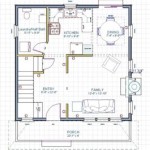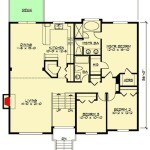Exercise Plan For Beginners At Home: A Comprehensive Guide
Embarking on a fitness journey from the comfort of one's home can be an empowering and convenient way to improve overall health and well-being. A structured exercise plan is crucial for beginners to avoid injury, maintain motivation, and achieve desired results. This article provides a detailed, informative guide to developing an effective at-home exercise plan tailored for individuals new to regular physical activity.
Before initiating any exercise program, it is strongly recommended to consult with a healthcare professional. This step is particularly important for individuals with pre-existing health conditions, such as cardiovascular issues, musculoskeletal problems, or other chronic illnesses. A medical professional can assess individual health status, identify potential risks, and provide personalized recommendations to ensure the safety and effectiveness of the exercise plan.
The foundation of any successful exercise plan lies in a well-defined structure. This includes setting realistic goals, establishing a consistent schedule, and incorporating a variety of exercises to target different muscle groups. Ignoring these fundamental elements can lead to frustration, burnout, and ultimately, abandonment of the fitness routine.
Defining Realistic Goals
Goal setting is an essential component of any exercise plan. However, it is crucial to set realistic and achievable goals. Attempting to accomplish too much too soon can be discouraging and lead to injury. Goals should be specific, measurable, attainable, relevant, and time-bound (SMART). For example, instead of aiming to "get in shape," a more effective goal would be to "walk briskly for 30 minutes, three times a week, for the next month." Breaking down larger goals into smaller, manageable steps can significantly enhance motivation and increase the likelihood of success.
Beginners should focus on establishing a consistent exercise routine before attempting to push their limits. Prioritizing consistency over intensity in the initial weeks allows the body to gradually adapt to the demands of physical activity. This approach minimizes the risk of injury and promotes long-term adherence to the exercise plan. Consider starting with shorter workout sessions and gradually increasing the duration and intensity as fitness levels improve.
Furthermore, goals should be aligned with individual fitness levels and preferences. For example, individuals who dislike running may find it more enjoyable and sustainable to focus on activities such as cycling, swimming, or dancing. Choosing activities that are genuinely enjoyable increases the likelihood of adherence and makes the exercise routine a more positive experience.
Establishing a Consistent Schedule
Consistency is paramount in any exercise plan. Establishing a consistent schedule helps to build exercise into a daily or weekly routine, making it easier to stick to. It is recommended to set aside specific times for exercise and treat these appointments as non-negotiable commitments. Integrating exercise into a daily routine, like scheduling it before work or after dinner, increases the likelihood of adherence. The schedule should be realistic and adaptable to account for potential disruptions or changes in circumstances.
Creating a written schedule can also be beneficial. Visualizing the exercise plan in a tangible format reinforces commitment and helps to track progress. The schedule should clearly outline the days, times, and types of exercises to be performed. Using a calendar or planner to mark down workout sessions can serve as a visual reminder and motivational tool.
Flexibility is also important when it comes to scheduling. Unforeseen circumstances may occasionally disrupt the exercise routine. It is important to be adaptable and willing to adjust the schedule as needed. If a scheduled workout is missed, it should be rescheduled as soon as possible. Avoiding a pattern of missed workouts is crucial for maintaining consistency and achieving desired results.
Designing a Beginner-Friendly Exercise Routine
A beginner-friendly exercise routine should incorporate a variety of exercises that target different muscle groups and promote overall fitness. The routine should include cardiovascular exercise, strength training, and flexibility exercises. The emphasis should be on proper form and technique to minimize the risk of injury. Starting with simpler exercises and gradually progressing to more challenging variations is recommended. The following sections outline examples of each type of exercise that are suitable for beginners.
Cardiovascular Exercise: Cardiovascular exercise, also known as aerobic exercise, strengthens the heart and lungs, improves circulation, and burns calories. Examples of beginner-friendly cardiovascular exercises that can be performed at home include:
- Walking: Walking is a low-impact exercise that can be easily incorporated into a daily routine. Start with short walks and gradually increase the duration and intensity.
- Jogging in place: Jogging in place is a simple and effective cardiovascular exercise that can be performed indoors.
- Jumping jacks: Jumping jacks are a classic cardiovascular exercise that engages multiple muscle groups.
- Dancing: Dancing is a fun and engaging way to improve cardiovascular fitness.
- Stair climbing: If stairs are available, stair climbing is an excellent cardiovascular exercise that also strengthens the lower body.
It is recommended to aim for at least 30 minutes of moderate-intensity cardiovascular exercise most days of the week. Individuals can break this down into shorter sessions, such as three 10-minute intervals, if needed.
Strength Training: Strength training builds muscle mass, strengthens bones, and improves overall physical function. Bodyweight exercises are an excellent starting point for beginners, as they require no equipment and can be performed anywhere. Examples of beginner-friendly bodyweight exercises include:
- Squats: Squats target the quadriceps, hamstrings, and glutes.
- Push-ups: Push-ups target the chest, shoulders, and triceps. Modify push-ups by performing them against a wall or on the knees if needed.
- Lunges: Lunges target the quadriceps, hamstrings, and glutes.
- Plank: The plank is an isometric exercise that strengthens the core muscles.
- Crunches: Crunches target the abdominal muscles.
- Bird Dog: The bird dog exercise targets core stability and balance.
It is recommended to perform two to three strength training sessions per week, with at least one day of rest between sessions. Aim for 10-12 repetitions of each exercise, performing 2-3 sets. Proper form is crucial to avoid injury. Observing videos or consulting with a fitness professional can help ensure proper technique.
Flexibility Exercises: Flexibility exercises improve range of motion, reduce muscle stiffness, and prevent injuries. Stretching should be performed after each workout, when the muscles are warm. Examples of beginner-friendly stretching exercises include:
- Hamstring stretch: Sit on the floor with legs extended and reach towards the toes.
- Quadriceps stretch: Stand and hold one foot behind the body, pulling it gently towards the glutes.
- Calf stretch: Stand facing a wall and place one foot slightly behind the other. Lean forward against the wall, keeping the back leg straight.
- Shoulder stretch: Reach one arm across the body and use the other arm to gently pull it closer.
- Triceps stretch: Reach one arm overhead and bend the elbow, reaching towards the upper back. Use the other arm to gently pull the elbow further.
Hold each stretch for 20-30 seconds. Avoid bouncing or forcing the stretch. Focus on breathing deeply and relaxing the muscles.
Sample Beginner Workout Routine: The following is a sample beginner workout routine that can be performed at home. It is important to listen to the body and adjust the routine as needed. This is to be performed three times a week with rest days in between.
Warm-up (5 minutes):
- Light cardio, such as walking in place or jumping jacks.
- Dynamic stretches, such as arm circles and leg swings.
Workout (30 minutes):
- Squats: 2 sets of 10-12 repetitions
- Push-ups (modified on knees if needed): 2 sets of 8-10 repetitions
- Lunges: 2 sets of 10-12 repetitions per leg
- Plank: 2 sets, hold for 30 seconds
- Crunches: 2 sets of 15-20 repetitions
- Walking, Dancing or Jogging in Place: 20 minutes
Cool-down (5 minutes):
- Static stretches, holding each stretch for 20-30 seconds.
- Focus on stretching the major muscle groups worked during the workout.
Progression and Modification: As fitness levels improve, it is important to gradually increase the intensity and duration of the workouts. This can involve increasing the number of repetitions, sets, or the duration of the cardiovascular exercise. It may mean moving from knee push-ups to full push-ups, or adding light dumbbells to the squats. Small incremental changes allow the body to continue to adapt and progress without risking injury.
Modifications may also be necessary to accommodate individual needs and limitations. If an exercise causes pain, it should be modified or avoided altogether. Alternatives can be found to target the same muscle groups in a more comfortable and effective manner. The most effective exercise is one that can be comfortably performed, as this means you are more likely to stick with the exercise plan.
Proper nutrition and hydration are also critical components of a successful exercise plan. A balanced diet that includes adequate protein, carbohydrates, and healthy fats provides the fuel necessary for exercise and recovery. Staying hydrated before, during, and after workouts is essential for maintaining performance and preventing dehydration.
Staying motivated can be a challenge, especially in the early stages of an exercise plan. Finding a workout buddy, tracking progress, and rewarding achievements can help to maintain motivation. Celebrating small victories reinforces positive habits and encourages continued adherence to the exercise routine. Consistency, adaptability, and a focus on overall well-being are key to achieving long-term success with an at-home exercise plan.

5 Full Exercises For A Beginner Home Workout Myvegan

Muscle Building Good Gym Routine For Great Beginners

10 Minute Workout For Beginners Easy At Home

A 30 Day Strength Training Routine No Equipment Required

Best Exercise Routine For Beginners Workout Chart At Home New Arrivals

Fitness For Beginners At Home Top

4 Week Workout Plan For Beginners At Home Without Any Equipment

Free 4 Week Beginner S Workout Plan Total To Lose Weight And Tone Muscle

Beginner Weight Loss Workout At Home 12 Guaranteed Week Fat Program

Exercise Routine For Beginners At Home








